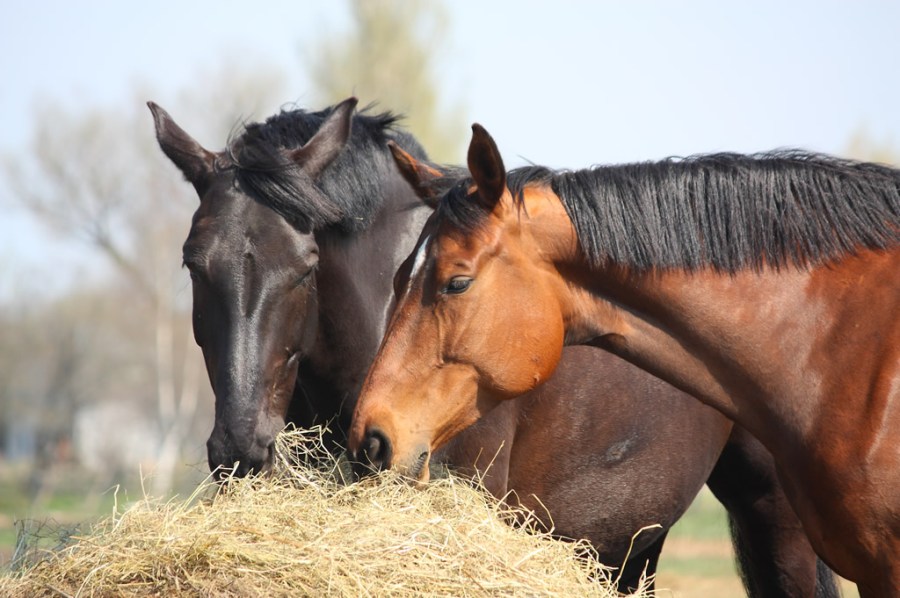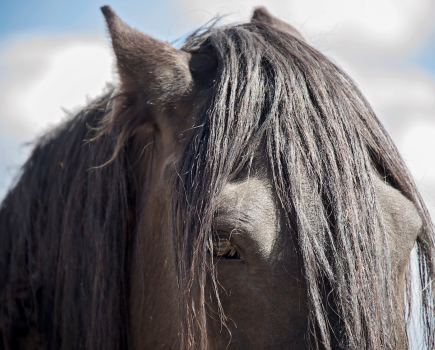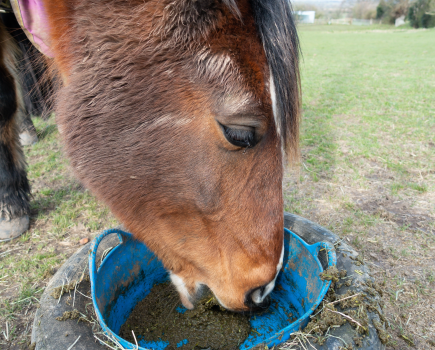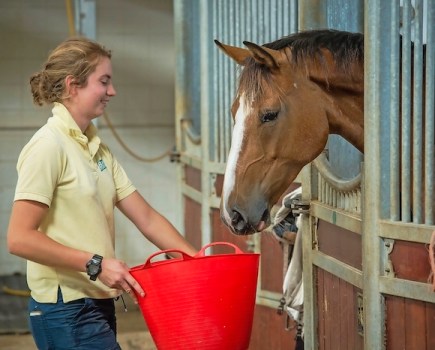*ADVERTISEMENT FEATURE*
During the winter, many people start to consider changing their horse’s feed. Changes in bodyweight, workload, and behaviour may be apparent which can all necessitate alterations to the diet. With grass growth in decline and fields being muddy, reliance on conserved forage increases. As forage usually forms the largest part of the horse’s diet it is important to choose wisely. Not all forage is the same, and finding the right forage for the right horse is important, especially if you have a horse that doesn’t hold weight well.
For poor doers or those horses with higher energy requirements to support their workload, choose more digestible sources of forage such as haylage. Being cut at an earlier botanical age than hay, haylage tends to be more digestible and therefore higher calorie for those with a greater energy requirement.
You can also bring the paddock into the stable by supplementing the forage ration with grass products such as Dengie Pure Grass or Pure Grass Pellets. The grasses in these products are cut at an earlier botanical age meaning they provide a greater calorie intake, and your horse will find them very tasty. Providing a choice of forages can be particularly useful for fussy feeders and may encourage them to eat more, thereby helping these horses to maintain weight.
How much forage does my horse need?
It is estimated that horses typically have an appetite for up to 2.5% of their bodyweight daily on a dry matter basis. For a 500kg horse, this is 12.5kg dry matter. For horses that don’t hold their weight well, it is beneficial to feed forage ad-lib, which means they always have forage available and can eat as much as they want to. Estimating your horse’s forage appetite and weighing your horse’s forage can help you keep track of their forage intake to ensure they are eating enough. Doing this is also helpful for reducing waste too.
The table below shows the quantities of forage a 500kgs poor doer would need to provide 2.5% of bodyweight. It is important to note that more haylage needs to be fed as it has a lower dry matter content.
| Forage Type | Dry Matter % of the forage | As fed kgs required to supply 2.5% of Bodyweight Dry Matter |
| Hay | 85% | 14.7kgs |
| Haylage | 65% | 19.2kgs |
How to feed for condition without the fizz
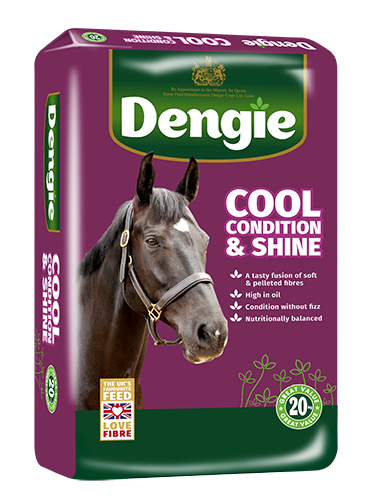
The key to feeding for condition without any fizz is to use fibre in your horse’s feed bucket. With highly changeable weather conditions impacting your horse’s exercise routine, feeding fibre and oil in the bucket supplies slow-release energy for a calmer ride compared to cereal-based concentrates that supply higher levels of starch. If poor doers waste energy from more silly or spooky behaviour it can make weight maintenance harder and so using slow-release energy sources is ideal.
Dengie Cool, Condition & Shine is a high-fibre fusion of chopped and pelleted fibre including grasses, alfalfa and straw with a light molasses and oil coating with added spearmint and vitamins and minerals. At 11MJ/kg Digestible Energy, Dengie Cool, Condition & Shine has a calorie level equivalent to a conditioning feed but with around 10 times less starch.
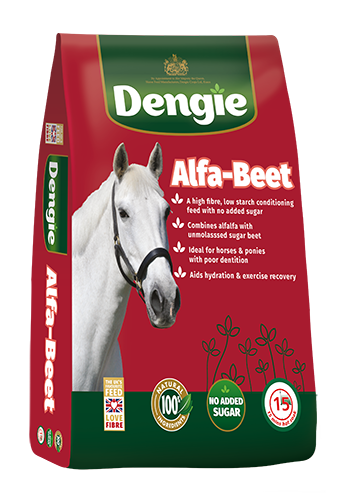 Dengie Alfa-Beet is a highly digestible, high-fibre mash that can be added alongside any of Dengie’s fibre feeds when extra weight gain and condition is required. It is also particularly useful for horses with dental issues that struggle to chew and those that require a higher calorie, low-sugar and low-starch ration. Alfa-Beet combines alfalfa and unmolassed sugar beet with a two-hour cold soak or a 15-minute hot soak time.
Dengie Alfa-Beet is a highly digestible, high-fibre mash that can be added alongside any of Dengie’s fibre feeds when extra weight gain and condition is required. It is also particularly useful for horses with dental issues that struggle to chew and those that require a higher calorie, low-sugar and low-starch ration. Alfa-Beet combines alfalfa and unmolassed sugar beet with a two-hour cold soak or a 15-minute hot soak time.
For friendly feeding advice contact the Dengie Feedline 01621 841 188 or visit dengie.com

